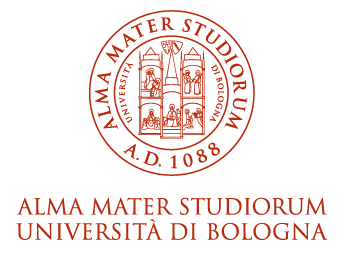- Docente: Hans Joachim Rudiger Achilles
- Credits: 4
- SSD: MAT/05
- Language: Italian
- Teaching Mode: Traditional lectures
- Campus: Bologna
-
Corso:
First cycle degree programme (L) in
Orthopaedics techniques (cod. 8483)
Also valid for First cycle degree programme (L) in Natural Sciences (cod. 8016)
Learning outcomes
At the end of the course, the student will have the basic knowledge of mathematics, necessary to deal with the other disciplines of the degree programme. In particular, the student will be able to: - understand and use the graph of a function in mathematical models; - understand the use of the tools of differential and integral calculus and linear algebra in applications; - use simple mathematical software to solve equations, draw graphs and study them, perform calculations with derivatives, integrals and matrices. He or she will also have some knowledge of basic statistical methods. In particular, the student acquires familiarity with the scientific method and is able to adopt the most suitable basic statistical analysis methods both in field and laboratory experiments. He or she will possess basic skills of some aspects of computer science. In particular, students will understand Internet basics and will be familiar with software for the management of data bases.
Course contents
Prerequisites: Elementary set theory. Algebra of real numbers. Algebraic equations and inequations. Elementary functions: powers, roots, exponential and logarithmic functions, circular functions. Analytic geometry in the Euclidean plane. Vectors in the plane and space.
Module 1: Mathematics (Rüdiger Achilles)
Enumerative combinatorics: Permutations and combinations
without and with repetitions, Newton's binomial formula.
Numbers: A glimpse on real numbers, powers with real
exponents.
Linear systems and matrices: Matrix algebra, linear
transformations, linear systems, Gauss-Jordan elimination.
Real functions: Functions, function composition, inverse
functions, real functions, in particular linear, polynomial,
exponential, logarithmic, trigonometric functions and their graphs,
limits and asymptotes, continuity.
Differential calculus: Derivatives and differentials, their
meaning, differentiation rules, Taylor's formula.
Integral calculus: Indefinite integral, definite
(Riemann) integral and its properties, mean-value theorem for
definite integrals, fundamental theorem of calculus, integration
techniques (integration by parts and integration by substitution),
applications of the definite integral, differential equations with
separable variables.
Module 2: Applied Statistics (Federico Plazzi)
3rd October: presentation of the course; introduction to descriptive statistics; distribution of the initial questionnaire; measures of central tendency (arithmetic mean, geometric mean, harmonic mean, weighted average, median, mode).
10th October: measures of dispersion (deviation, variance, standard deviation); concept of statistical distribution of data; normal distribution, standard normal distribution, test Z.
17th October: Test of normality (quantiles and plot quantile-quantile, Shapiro-Wilk test).
24th October: Introduction to inferential statistics; Student's t-test: one-sample t-test.
31st October: LAB: introduction to R; how to write an input file; how to retrieve, view, manage data; test of normality and Student's t-test with R.
7th November: Two-sample t-test of paired samples and of unpaired samples; non normally distributed quantitative variables: Wilcoxon–Mann–Whitney tests.
14th November: Qualitative variables: chi-square test.
21st November: Linear regression and correlation: Pearson's correlation coefficient, significance of a correlation.
28th November: Variance analysis, one-way and two-way ANOVA, Tukey's test.
5th December: LAB: chi-square test, regression and variance analysis with R.
Module 3: Computer Science (self-learning: https://elearning-cds.unibo.it/)
The structure of the Internet and Internet services; construction
of a data-base.
Readings/Bibliography
E.N. Bodine, S. Lenhart, L.J. Gross: Mathematics for the Life Sciences. Princeton University Press, 2014, ISBN: 9780691150727.
Marco
Abate: Matematica e Statistica 2/ed, Le basi per
le scienze della vita. McGraw-Hill Education (Italy) srl, 2013, ISBN: 9788838668227.
Claudia Neuhauser: Calculus For Biology and Medicine,
3/E.
Pearson, 2011, ISBN: 9780321644688.
Teaching methods
Lessons and exercises in the classroom. Self-learning via
Internet.
Assessment methods
There are independent assessments for each of the three course
modules: exams in Mathematics and Statistics and a Computer Science
test. The final mark, on a 30-point scale, will be the weighted
score with respect to the credit points of Mathematics (6 ECTS) and
Statistics (2 ECTS), increased by a possible bonus of one, two or
three points if the score of the Computer Science test is between
24 and 26, 27 and 29 or 30 respectively.
The written test in Mathematics (the use of books, notes,
calculators, electronic equipment is not allowed ) is designed to
ascertain skills to solve exercises with respect to the topics
covered in the course. It serves as a qualifying examination for
admission to the oral examination (score at least 15/30), which is
compulsory for all. In Statistics, there is only a written
exam.
Teaching tools
Alma Mathematica: an
online math-bridge course which with its diagnostic tests offers
students the possibility to complete the missing pieces and refresh
the material necessary for a successful study of mathematics. This
self-study course is complemented by a virtual tutorial where
students can get instant help by skype, e-mail and telephone.
Exercises for homework and course material are available at http://www.dm.unibo.it/~achilles/.
Software R - a free software environment for statistical computing
and graphics, available at http://www.r-project.org/.
Links to further information
http://www.dm.unibo.it/~achilles/scienze/index.html
Office hours
See the website of Hans Joachim Rudiger Achilles
